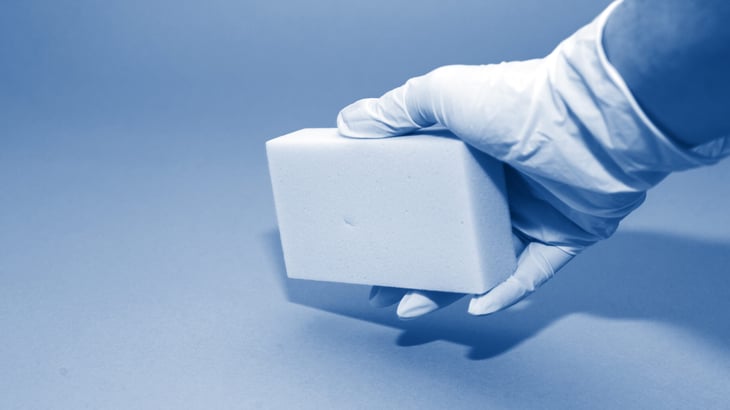
If you’ve used a Mr. Clean Magic Eraser, you know the results can be … well, pretty magical.
These dense little sponges are actually melamine foam. (Hint: You can buy generic versions on Amazon for a lot less than retail.) They easily remove permanent marker, hard water buildup, soap scum and a host of other grimy messes.
But — and it’s a big “but” — Magic Erasers shouldn’t be used on every surface. Here’s why: Melamine foam is as effective as it is because it works like fine sandpaper.
So, love your Magic Eraser, but proceed with caution. Here are some things you should never clean with a melamine sponge.
1. Your car’s exterior
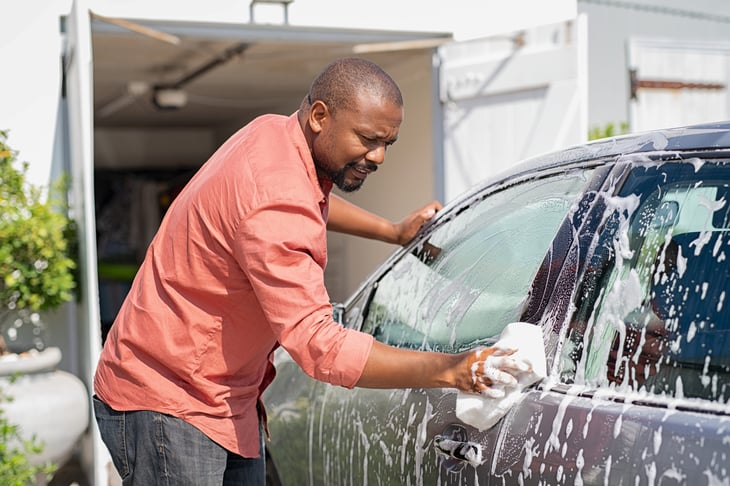
Using a Magic Eraser to clean your car might magically reduce its value. According to Procter & Gamble, the company behind the Magic Eraser line, the melamine sponges should not be used on any high-gloss surface — especially the exterior of your prized ride.
For more tips like this, check out “9 Big Mistakes You’re Likely Making When Washing the Car.”
2. Vinyl flooring
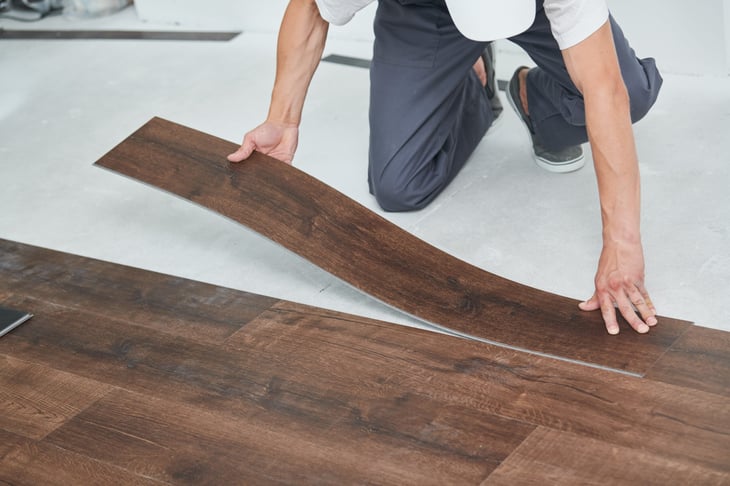
I learned this lesson the hard way. After noticing a tiny streak on the vinyl floor of my laundry room, I absentmindedly grabbed a Magic Eraser to clean it. One quick wipe not only removed the streak, it permanently lightened the vinyl by two full shades. Sure the scuff was gone, but so was the vinyl’s finish. Oops.
As it turns out, P&G recommends against using Magic Erasers on various surfaces. In addition to high-gloss surfaces, they include polished, dark, brushed and satin surfaces.
3. Electronic screens
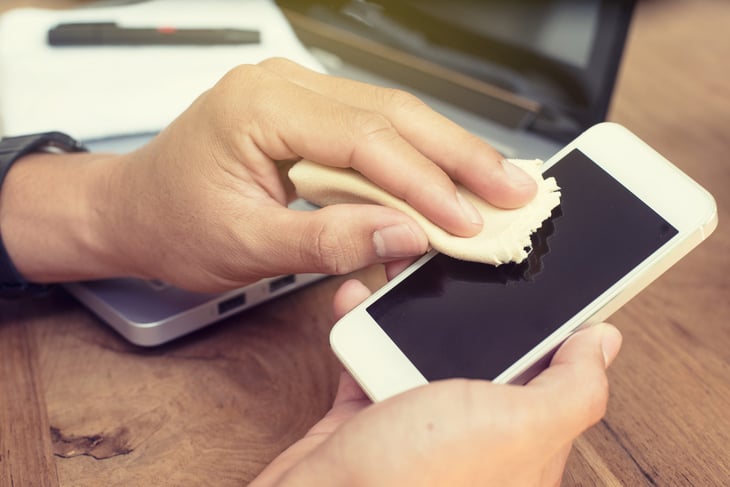
To remove fingerprints on tablets, TVs and smartphones, stick with a soft microfiber cloth. Melamine sponges may damage these delicate items and even strip away anti-scratch coatings on handheld devices.
For alternatives, check out:
- “This Is the Only Thing You Need to Clean a TV Screen
- “How to Sanitize Your Phone Without Damaging It
4. Natural stone surfaces
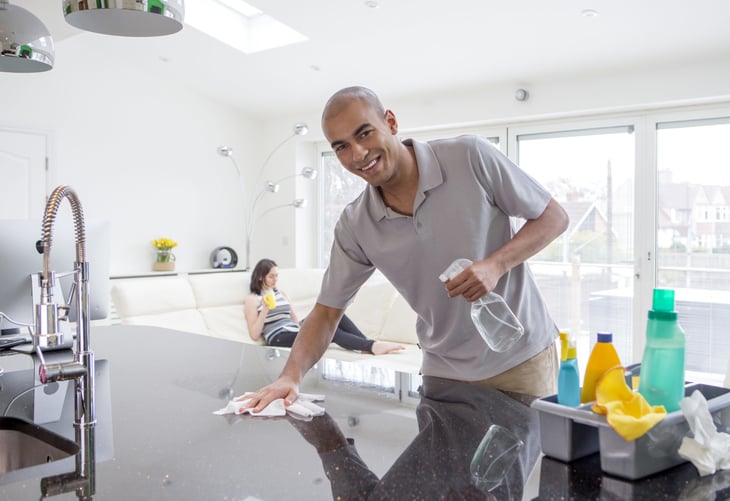
Want to keep those gorgeous stone countertops looking their best? Avoid cleaning them with a melamine sponge. According to residential cleaning company The Maids, the sponges can scratch marble and granite or dull the finish.
5. Stainless steel appliances
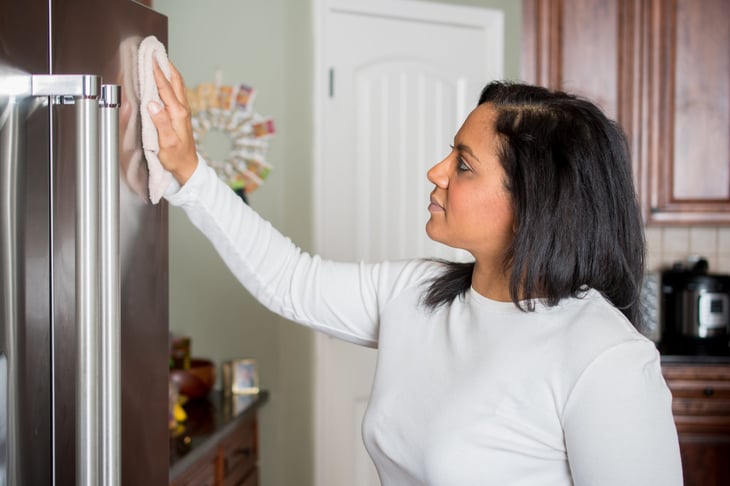
Most stainless steel appliances have a high-gloss finish that seals the metal and helps protect it from smudges. Melamine sponges can quickly strip that finish and leave areas dull and discolored.
To keep your kitchen looking great, check out these stainless steel cleaning tips from Good Housekeeping.
6. Cookware
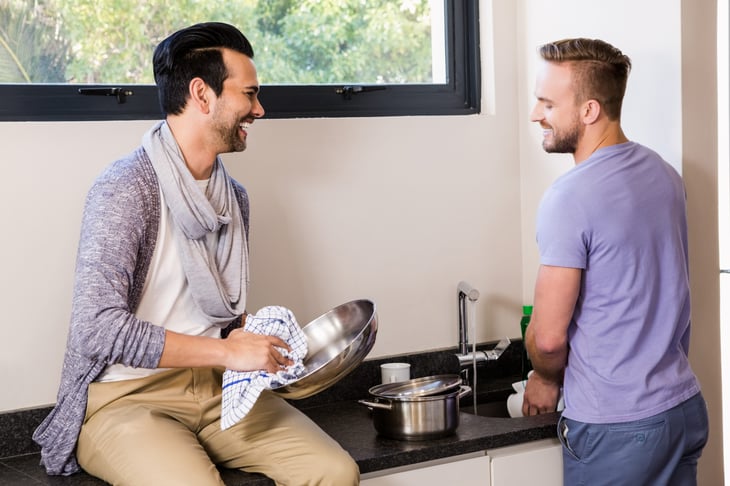
You guessed it — the abrasive quality of Magic Erasers is bad news for cookware. The sponges can scratch the cooking surface of nonstick pots and pans, weakening the non-stick coating and potentially releasing those chemicals into food.
Do you have copper or stainless steel cookware? Or any other type of pots and pans with polished or brushed surfaces? Magic Erasers also are not recommended for use on them, either.
7. Wood
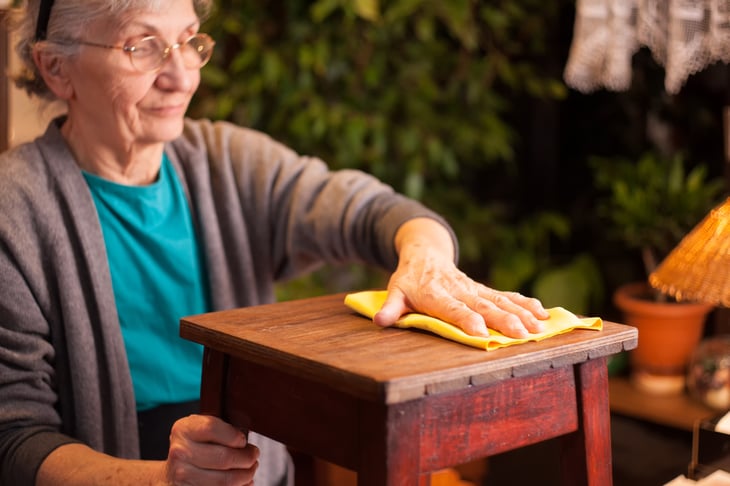
Magic Erasers can be tragic on wood. Even minimal wiping with one can quickly strip away the finish and damage the wood surface.
P&G does not recommend using them on polished or even bare wood.
This Old House offers some great tips to safely clean wood floors. And HGTV’s guide for cleaning wood furniture covers everything from making your own polish to removing water stains.
8. Your skin

Spent the day gardening or working on the car? Resist the urge to clean your hands with a Magic Eraser. The sponge’s abrasiveness can damage skin.
As P&G cautions in all-uppercase letters, “Do not use on skin or other parts of the body. Using on skin will likely cause abrasions.”
9. Your teeth

In 2021, a disturbing new TikTok trend emerged: Multiple videos showed people cleaning their teeth using a Magic Eraser.
Thankfully, most of us don’t get our dental hygiene advice from a social media platform. But just in case it needs to be stated explicitly — Magic Erasers should never be used on teeth. The abrasives scrub away the enamel and can lead to bacterial problems, tooth sensitivity or tooth decay, as many dentists told
the media in response to the viral videos.
10. Anything — without a spot-test first
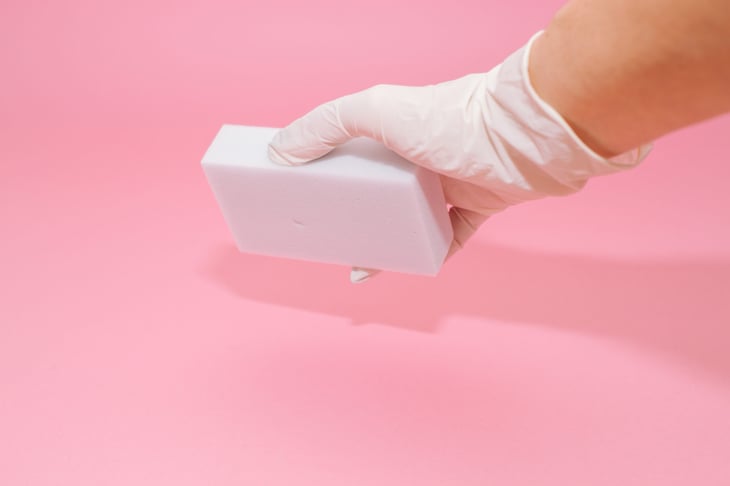
When in doubt, play it safe. If you’re unsure how an item will react to a melamine sponge, perform a spot test. Even P&G advises that you “test a small area with light pressure before use.”
Lightly rub the sponge on an inconspicuous area of the item and let it dry. Then, carefully examine the surface from multiple angles to make sure there’s no discoloration, abrasion marks or material loss.





Add a Comment
Our Policy: We welcome relevant and respectful comments in order to foster healthy and informative discussions. All other comments may be removed. Comments with links are automatically held for moderation.